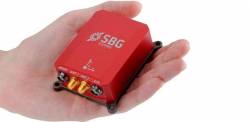We have just made the transition into the new year of 2007. Most of us probably already have our eyes focused onto the next 12 months along with some wishes and perspectives that we would like to have fulfilled in the coming 365 days.
We have just made the transition into the new year of 2007. Most of us probably already have our eyes focused onto the next 12 months along with some wishes and perspectives that we would like to have fulfilled in the coming 365 days.
In the same spirit, over the next two issues of Inside GNSS this column will take a look into the near future and — what is even more exciting — into the further future of satellite navigation. But what that future will look like depends to an enormous extent on what the past was; so, we should have first a look back into the roots of GNSS.
Long ago the Americans entered the global navigation satellite system (GNSS) era with the Global Positioning System (GPS) as the result of efforts that began in the late 1960s. The Russians followed soon afterwards (or did they do it in parallel?) with GLONASS. Both of these systems are now undergoing extensive modernization. Moreover, the European Galileo system is joining the GNSS club, and China is now planning its own version called Compass.
In the meantime lots of augmentation and regional systems have been developed or are currently under consideration. From military to civil signals, from medium Earth orbit (MEO) to geostationary Earth orbit (GEO) and inclined geosynchronous orbits (IGSO), the palette of systems and offered services is as wide as imagination allows.
Is it not time, therefore, to pause and think for a moment about where we want GNSS to move? Is it not already time to really “think global” and to coordinate and harmonize all the existing and projected navigation satellite systems? If so, then the question naturally arises: what should the “Global Navigation Satellite System of Systems” look like?
This column will try to shed some light on the fascinating new world of GNSS in which we will live around the year 2020 if all the currently modernizing and planned new systems come into reality. It will be a complex world where the word “coordination” will be the key and from which, if we do it right, users will be the ones that will profit the most. After all, why should a GNSS user really care about whether one of his or her signals comes from GPS, the other from Galileo, the third from GLONASS and the fourth from Compass as long as the GNSS receiver works well?
Scenes from the Present
Today only GPS is fully operational. Nevertheless, Russia hopes to return GLONASS to full operation capability (FOC) with a completed constellation by 2009, and Galileo’s FOC is now expected in 2012. Compass is already knocking on the door, and in spite of the fact that China has still a long way to go and lengthy negotiations will be needed, a scenario of four global coverage satellite systems seems to be very likely in a future not so far away from today.
From the experience with Galileo, we know how important the roles of interoperability and compatibility with GPS were from the very beginning. Unfortunately, major differences between those two systems and GLONASS still exist.
However, also on the GPS/GLONASS side, work on attaining real interoperability is continuing. Just recently during the GPS/GLONASS Working Group 1 meeting in December 2006, both sides emphasized the benefit to the user community that a common approach concerning FDMA/CDMA would bring in terms of interoperability. The Russian side announced that they will come to a decision on adding or converting to a CDMA format by the end of 2007. The formal U.S.-Russia statement can be viewed at
<http://www.glonass-ianc.rsa.ru/i/glonass/joint_statement_eng.pdf>.
The direction in which COMPASS will go remains a large unknown. In fact, if the need of standardization was always there, it seems that the concept is gaining in interest the more systems come into play.
But before dreaming with our ideal GNSS, let us first look more closely into what the current reality is and what the plans for new GNSS systems are.
(For the rest of this story, please download the complete article using the PDF link above)





